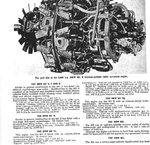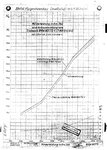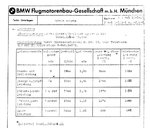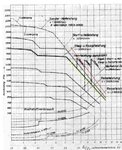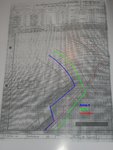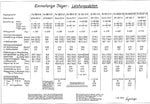An interesting, to say at least, engine from Munich, the BMW 801S, was a high altitude version of the renown 801D-2. It was powering the Fw-190A-9, enabling it to halve the speed difference between the Fw-190A-8 and D-9. The A-9 was also a heavy weight, like the A-8.
My question is: at what full throttle altitude the engine produced what amount of power?
With or without the ram effect - anything goes. Preferably without overboosting (ie. at 1,4something ata); I'm interested at altitude values, since the take off power, with overboosting (SonderNotleistung) is stated at 2000 PS by many sources.
My question is: at what full throttle altitude the engine produced what amount of power?
With or without the ram effect - anything goes. Preferably without overboosting (ie. at 1,4something ata); I'm interested at altitude values, since the take off power, with overboosting (SonderNotleistung) is stated at 2000 PS by many sources.

